What is Dynamic Bike Fitting?
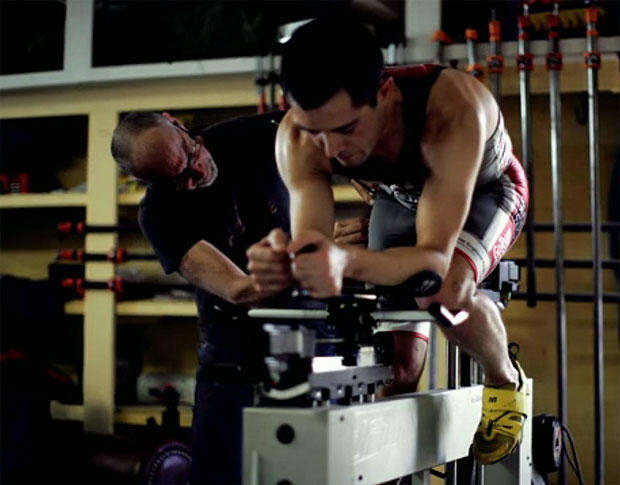
Most of the time when I say “dynamic bike fit” I have to explain what it is. So here's what it is just in such case you and I are together and this term comes up in conversation.
Dynamic bike fitting is a type of prescriptive system, that is to say, when done correctly such a fit session tells you how to sit aboard a bike, and then “prescribes” a bike (or bikes) that matches those fit coordinates (seat height and setback, armrest or handlebar height and fore/aft placement).
The alternative to dynamic is “static” and when I began cycling, in the 1970s, static was all there was. Static bike fit systems use as inputs limb length measures or even cruder metrics. For example, one way you knew the “cockpit” of the bike was correct is if, when seated on the bike, the road handlebar’s “tops” obstructed the view of the front hub. The saddle setback (or cockpit distance) was determined by placing the back of your elbow against the nose of the saddle, and your fingertips should – if fitted correctly – extend to the center of the tops (where the handlebar passes through the stem). Then you sit on the saddle with your shoes off in your stocking feet. With a straight leg, your heel should just graze the top of the pedal. That’s how you chose the proper seat height. That’s how we were told to fit ourselves to our bikes and this was pretty much the state of the bike fitting art even up to the highest racing levels.
Things got a little more advanced in the 80s and 90s with the Lemond and Hinault methods, which still relied on static measures but considered inseam, femur length and so on. This gave way to a bunch of systems that were all static but we got our first rudimentary fit tools.
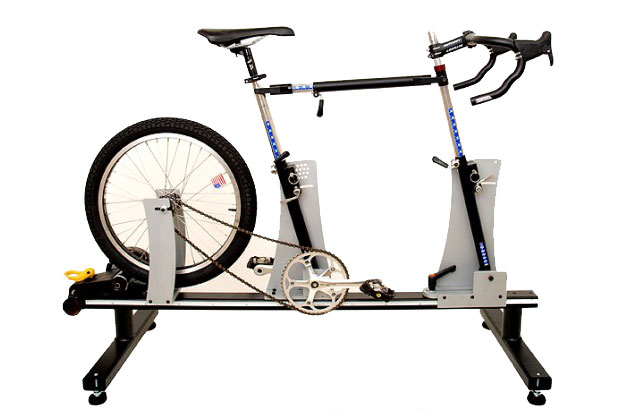
For the first time that I knew or noticed the results of certain systems not only defined fit coordinates but also prescribed the geometry of your custom bike. At the forefront of systems like these were – of course – companies that made custom bikes and such fitting required more advanced tools, notably fit bikes.
The first fit bikes were offered by custom bike makers and I call these “angular” fit bikes as opposed to what I call “X/Y fit bikes.” Angular bikes like the Waterford Fitmaster above resemble regular bikes. This was the start of anything that approximated dynamic bike fit. You used a static system to establish fit coordinates and then you set up a fit bike like this according to those coordinates. Voila, that fit bike matched the geometry of the custom bike the fitter would have his custom bike vendor build for you. Seat and head angles, top and head tube lengths, were all just read off the fit bike. Examples of angular fit bikes like these were made by Serotta and Calfee and as you’ll note every company I’ve mentioned made not only fit bikes, but custom bikes.
Dynamic bike fitting means your fit coordinates are not only a function of your body’s dimensions but how you ride a bike. Are you a toe pointer or a heel dropper? A spinner or a masher? A hard core criterium racer or a duffer? Answers to these and more inform your geometry and the one way that these angular fit bikes were “dynamic” is that you could, once the fit bike was adjusted to your statically-generated coordinates, pedal it. You could see how that bike was going to ride before your fitter had your frame custom built and I suppose this is when dynamic bike fitting first crawled out of the primordial soup and made its debut on land.
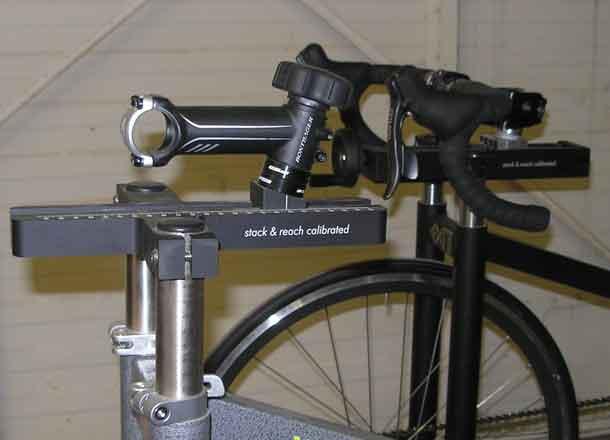
These angular fit bikes fell short in certain areas. None of them were really designed to have a high-quality, precise resistance unit; none were made so that fit coordinates could be changed quickly, during pedaling; and most importantly none of them gave you metrics that would help you purchase production bikes.
A new fit bike by EXIT Cycling, a couple of those bikes are in the pic above, was built according to specs I needed. This bike incorporated a pair of terms I coined in 2003 for the purpose of prescriptive fit sessions: stack and reach. Those metrics are now ubiquitous on the geometry charts of bikes of every kind. My ambitions for these terms were more modest when I coined them: I simply wanted a way to compare the heights and lengths of all bikes so that we could prescribe the bike you needed based on your fit coordinates. The EXIT Cycling fit bike was the first to adjust up and down, and back and forth, across X and Y axes, and this allowed the bike to tell us the stack and reach of the frame we were looking for. I had this fit bike built as a necessary adjunct to our F.I.S.T. Bike Fit School, ongoing since 2003. (Registration is here for our Autumn 2023 Workshop, November 6-10.) A few years later Retul’s fit bike mirrored a lot of EXIT’s features and also output the stack and reach of frames based on a rider’s fit coordinates.
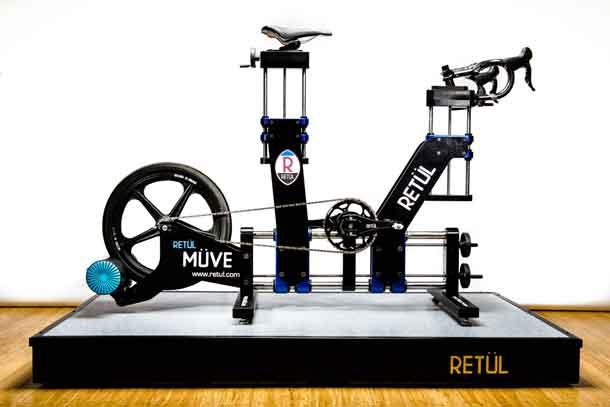
Subsequent X/Y fit bikes, like the GURU, the Shimano, and the Purely Custom output a slightly different set of metrics – HX and HY – which were the “stack” and “reach” from the bottom bracket to the handlebar clamp rather than traditional “frame” stack and reach, which measured from the BB to the head tube top. HX/HY has a particular utility better suited for prescribing, which I won’t detail but which we teach in our bike fit workshops.
Here’s one feature of these newer fit bikes that is of prime importance: They adjust easily and quickly, up/down and fore/aft, saddle and handlebars, with the rider aboard. Ideally, a fit bike is constructed so that the fit coordinates can be changed while the rider is pedaling. This is the “dynamic” in dynamic bike fit: A static fit system does not care how the rider pedals. you can exhume Abraham Lincoln from the grave and determine the geometry needed for his racing bicycle, because static systems only care about limb and body lengths and dimensions. Dynamic bike fitting cares about how you pedal. Dynamic fitting believes that two people with the same dimensions could easily end up with a different set of fit coordinates. Not too different, because all dynamic systems believe in some sense of “sameness”, that is, these systems believe that there is a correct saddle height, hip angle shoulder angle and so forth, and the point of the acceptable ranges in body angles during a Retul fit session is that almost all physically sound riders do ride with a posture inside of those angular ranges.
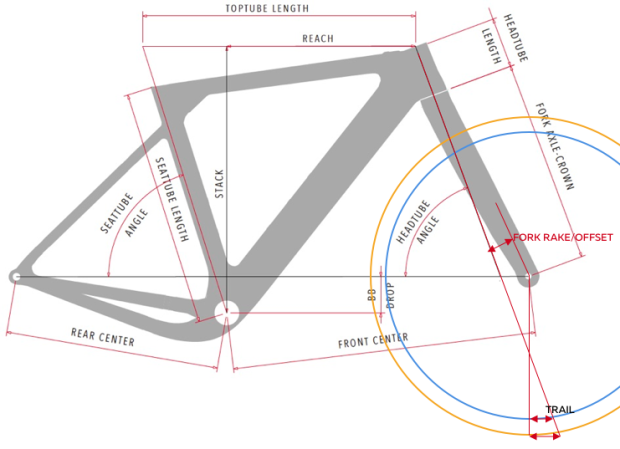
So, then, dynamic bike fitting is like a religion with denominations. F.I.S.T. is our denomination born here on Slowtwitch, sort of the Presbyterian version of dynamic bike fitting. Then you have the offshoots from F.I.S.T, such as GURU, Retul and so on. They’re the Baptist and Lutheran versions. But for our differences we all believe in 3 things: 1) Bike fitting at its best occurs when you’re riding a bike, so that you and your fitter can detect the difference immediately when a change is made in (say) aerobar elevation as you’re pedaling, ideally under the sort of pressure you feel when you’re in a race; 2) While there are differences in how each person should be set up on a bike, dynamic fitting does not exploit variances from norms (a protocol designed to favor the “need” for a custom bike) but honors norms; and 3) Dynamic fitting is the first and only bike fitting “religion” to prescribe what we call a “complete bike solution,” based on the fit coordinates achieved during a dynamic bike fitting session, which include production bikes.
In 2011 Trek came out with its Speed Concept and this bike came with its own prescriber. Why? That bike had 5 sizes, 6 stems, and pedestals and wedges and hardware designed to make it highly adjustable. It was so adjustable that a single pad X/Y could generate quite a few different solutions (a size M frame with a mid/far stem; a size L frame with a low/near stem; and so on). We were already using pad X/Y (the rise and run from the BB to the aerobar armrest) as a set of necessary fit coordinates, but Trek was the first to build its own prescriber for its bikes and for tri bikes these kinds of brand-specific prescribers became a necessary part of the bike prescribing. When you go to our fit assistance threads on Slowtwitch (for Cervelo, Canyon, Quintana Roo and Trek) our expert bike fitters ask you for your pad X/Y and walk you through this process.
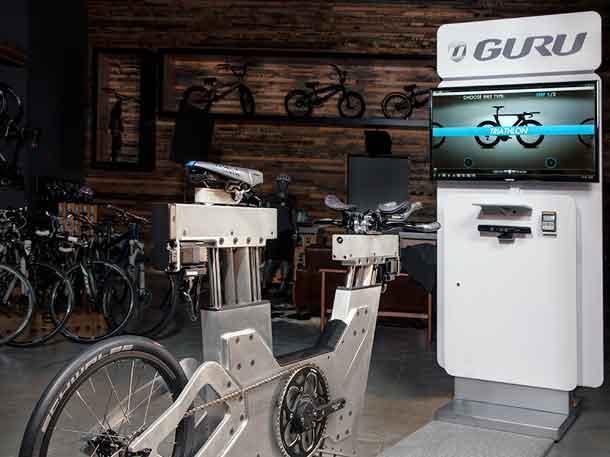
Finally, a digression if I may. I wrote a piece within the past week on prescriptive systems, intentionally published right before this one because brands that make highly tailored products will succeed or fail based on how they deal with this. By “highly tailored” I mean a product that has a lot of iterations. An air fryer doesn’t have a lot of iterations, but a wetsuit does. A triathlon wetsuit company might offer 5 models and 16 sizes per model. Which of those 80 is your ideal wetsuit? We have a mini-crisis right now in triathlon wetsuits because the size charts these companies produce are often really off, and the sales channel for tri wetsuits is almost exclusively mail order.
The wetsuit industry is a mess because certain brands – blueseventy, Sailfish – have pretty solid, proven size charts. Others… not so much. Same with cycling apparel makers. You can make a really great wetsuit or cycling jersey, but you can be abysmal at matching a consumer to his or her ideal product and size. Your training regimen is also the result of a prescriptive system.
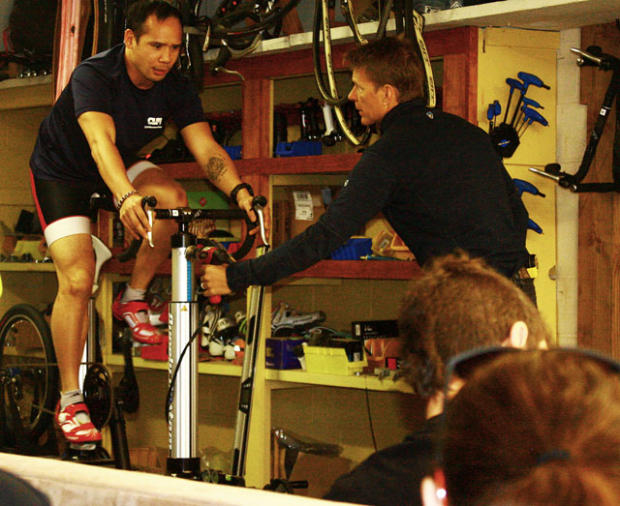
AI training platforms are precisely this, but even old style coach-and-athlete relationships are examples of prescriptive systems: you provide inputs, your coach provides a custom-prescribed output. Systems that prescribe a product based on customer inputs must be fact-based, science- and engineering-based, and rigorously tested.
In my opinion and experience whether it’s nutrition, wetsuits, bikes, saddles, training regimes, we are in a place where industry offers, in average, low-quality prescriptive systems but consumers apparently need to be burned more and worse before they, as a bloc, rise up and demand better. Happily, dynamic bike fit systems are prescriptive, and they prescribe complete bike solutions simply based on math.


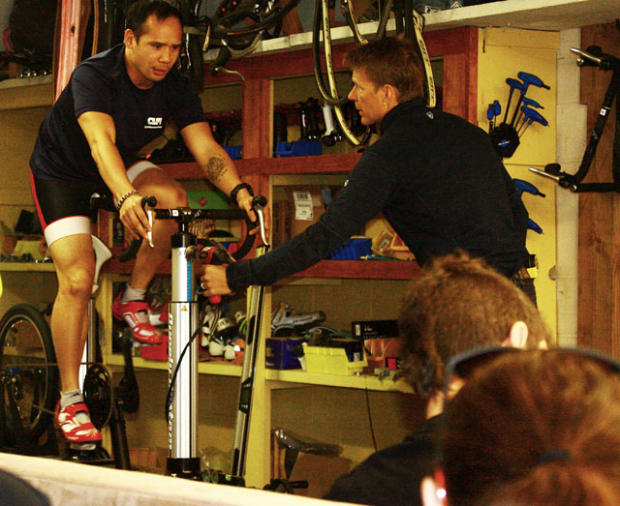
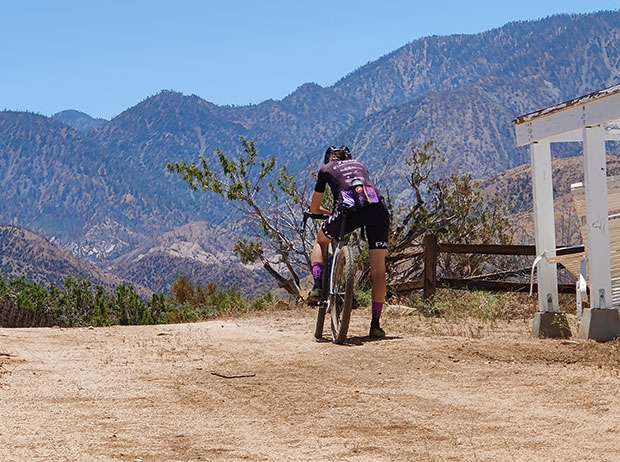
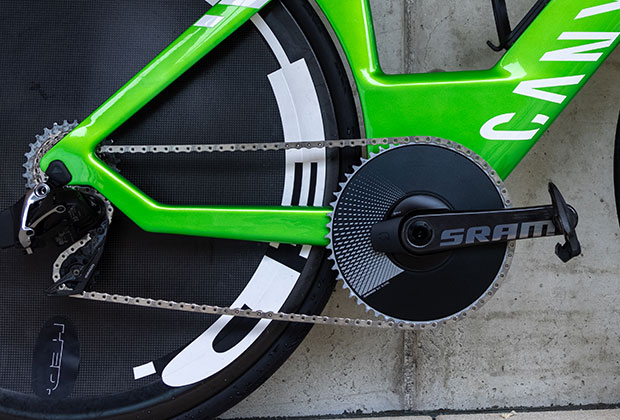
Start the discussion at forum.slowtwitch.com